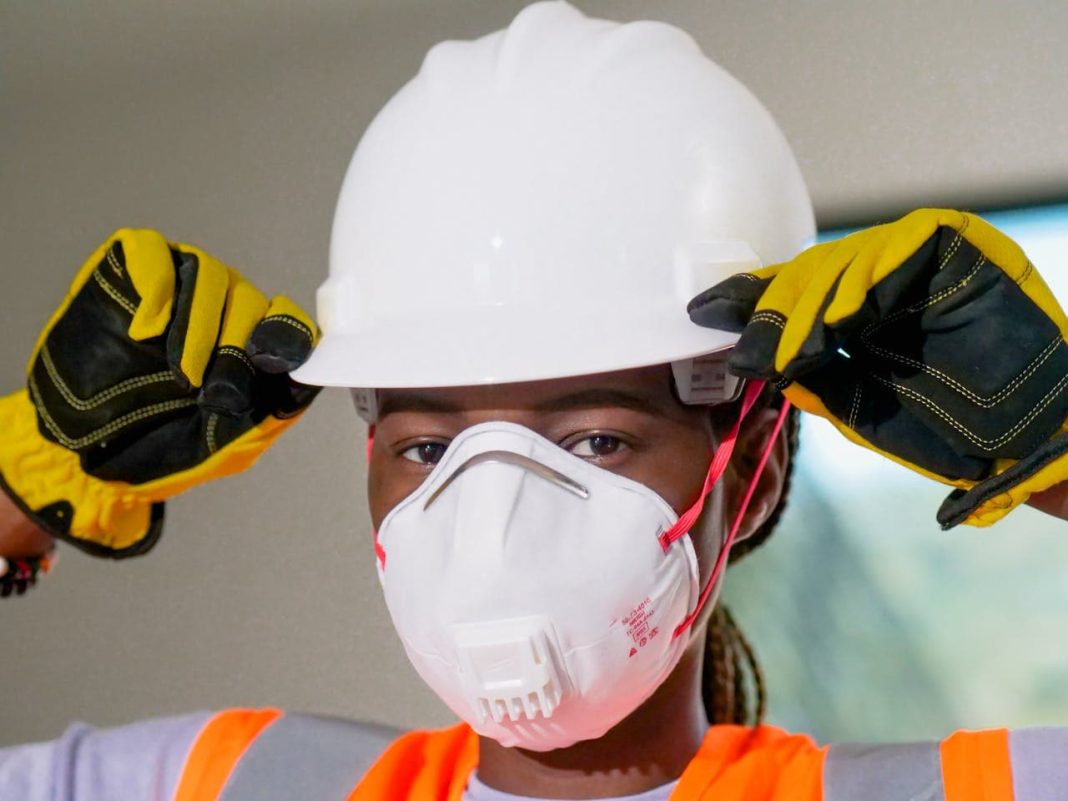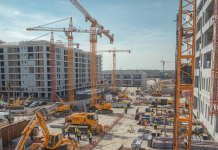Construction environments rank among the most hazardous workplaces, where daily operations expose workers to life-threatening risks. As industry professionals, establishing rigorous protection protocols represents both a regulatory obligation and a moral responsibility.
Latest statistics show that laborers in the construction business are exposed to work-related injury hazards exponentially compared to operators in other employment industries. As far as construction business owners, construction managers, and safety experts are concerned, a comprehensive safety measure will exceed regulatory requirements because it is a core task that directly involves human life, project delays, and business stability.
OSHA Construction Safety Regulatory Architecture
The Occupational Safety and Health Administration sets out full performance specifications under Construction Standard (29 CFR Part 1926), the workhorse of all building safety efforts. Such federal laws stipulate elaborate training provisions, hazard control measures, and worker protection provisions that construction work operations must follow in all settings.
Professional OSHA certification online training courses focus solely on industry-specific hazards and safety implementation processes. The certification measures prevent workers from being limited to only a fraction of the hazard recognition skills, accident prevention techniques, and emergency management measures needed to maintain a safe building condition.
Understanding comprehensive OSHA 10 and OSHA 30 certification requirements enables organizations to make strategic training investment decisions.
Strategic Training Framework Implementation
Progressive construction companies recognize that diverse worker classifications require customized training approaches. Entry-level construction personnel benefit substantially from foundational safety education through OSHA 10 training programs. The comprehensive OSHA 10 hour course encompasses critical subjects including hazard identification methodologies, personal protective equipment selection procedures, and fundamental safety protocol implementation.
Supervisory personnel and experienced construction professionals require advanced education through OSHA 30 training online programs. The extensive OSHA 30 Training delivers comprehensive construction safety management coverage, regulatory compliance frameworks, and sophisticated hazard recognition techniques.
Confronting Construction’s “Fatal Four” Hazards
The OSHA Fatal Four construction hazards (falls, struck by, caught in/between, and electrical hazards) must be a priority of construction safety professionals. These types of hazards are those that cause the greatest percentage of construction industry deaths, making them primary focal points of effective safety program development.
1. Fall Protection System
Fall protection constitutes the first priority safety issue due to the number one cause of construction worker deaths, fall-related incidents. OSHA laws exist to protect against falls in the event that a worker faces the risk of falling above six feet when it comes to construction work. Good fall protection methods include well-designed guardrail systems and safety net installations to strategic positions, and proper installation of personal fall arrest systems as specified under stringent regulatory conditions.
People who work on these systems will need special training using courses like OSHA 30 Online, related to correct equipment choice and inspection measures as well as emergency escape plan development.
2. Electrical Hazard
Electrical dangers are extremely considered substantial safety risks in work areas where electricity systems, electric equipment, and portable layouts are usually met. The basic OSHA programs help understanding in editorial policies of electrical safety, energy conditioning, ground fault circuit dealer installation, and safe work procedure.
According to the OSHA rules, temporary installations and power tools used in the construction process must be provided with the ability to be connected to the electricity system and function as ground-fault circuit interrupters. Such devices sense leakage of electrical current and cut the power supply to avoid instances of electrocution.
Personal Protective Equipment Program Development
Wearing personal protection appears as the last barrier in preventing construction site hazards. Effective PPE programs are not only about supplying equipment but also extensive training; the selection made must be suitable, and maintenance must be thorough to ensure optimal effectiveness.
1. Hard Hat Protection
Hard hat protection provides much-needed safety against falling items and overhead workplace risks that are prevalent in construction surroundings. Construction managers should confirm that any head protection for use should be as per OSHA performance requirements, which include impact resistance qualities, penetration resistance qualities, and electrical insulation qualities as needed.
2. Hazardous Material Exposure
Elements such as asbestos, lead-based materials, crystalline silica, and chemical substances are often released to jeopardize those carrying out construction work. Employees must obtain high-level training on hazard communication standards, proper materials handling methods, and the selection of protective gear. The OSHA 10 online curriculum effectively addresses these three chemical hazards and provides practical guidance on protective measures.
3. Respiratory Protection
Respiratory protection programs entail systematic control structures to mitigate exposure to airborne hazards, including engineering controls, administrative processes, and the selection of personal protective equipment. All employees handling respirable crystalline silica, asbestos products, or any other airborne irritant need respiratory protection through a detailed analysis of risks.
Heavy Equipment and Machinery Safety Operations
Different types of heavy equipment and machinery used on construction sites present varying safety challenges and operational risks. Special training and certification verification for equipment operators, and general hazard awareness training, are necessary to ensure safe operations around equipment activities by other construction workers.
1. Equipment Safety Protocols
The possible safety risks are detected by means of daily equipment inspections prior to the commencement of equipment operation. These inspections, such as the OSHA forklift certification, should be performed by competent persons in accordance with manufacturer specifications and OSHA regulations.
2. Tagout or Lockout Protocols
Lockout/tagout protocols are energy management procedures that help secure employees when carrying out maintenance and repair processes. Complete training in the Energy control procedure covers the background knowledge in the OSHA 10 online course, although certain advanced certification programs are training on the intricate energy control scenarios.
Emergency Response and Medical Preparedness Systems
Construction sites are places that need to develop emergency response plans that cover most of the possible crises. Reliable emergency preparedness usually spells the difference between a well-managed incident and disastrous results.
1. First Aid
Where medical facilities are not easily accessible, OSHA regulations mandate easily accessible first aid provision and trained first aid responders on construction sites. The number of required first aid-trained personnel will depend on the site’s size, identified levels of hazard, and proximity to professional medical facilities.
2. Emergency Response
Emergency evacuation operations deal with numerous crisis-related scenarios such as fire incidents, building collapse events, or in extreme climatic situations. These systems should be capable of operating in any kind of environmental conditions, and they should also provide a backup communication facility in case the basic systems fail to operate.
Compliance Documentation and Record Management
The employers should keep clear employee safety training records and the records must be specific in terms of showing the date of achievement of the course, what was covered during the course, and who had to teach the course and verify the qualification. OSHAonlinetrainings offer detailed training documentation which covers regulatory requirements and assists in meeting company compliance requirements.
Another typical insurance measure is the safety program audit which optimizes the effectiveness of the program and reveals areas that limits operation that needs to improve. These assessments include analysis of accident statistics, investigation into the trends of near-miss reporting, the effectiveness of training approaches administered to pilots, and regulatory compliance evaluation.
Moving Forward
Implementing comprehensive construction safety protocols requires systematic planning and committed execution. Construction companies should initiate thorough current safety program assessments, identify improvement gaps, and develop enhancement plans with specific timelines and accountability measures.
OSHA 10 online and OSHA 30 Training courses are professional development programs that equip workers and supervisors who operate regularly in the construction industry with the necessary knowledge and useful skills required to adopt safe work practices. This continuous professionalism is a vital organizational self-investment in the safety of workers and their survival.
To find out the provided OSHA training program that can assist construction companies acquire safer work environments, visit Get OSHAonlinetrainings and submit a request, where you may find the certified program that fits the construction industry’s needs.








